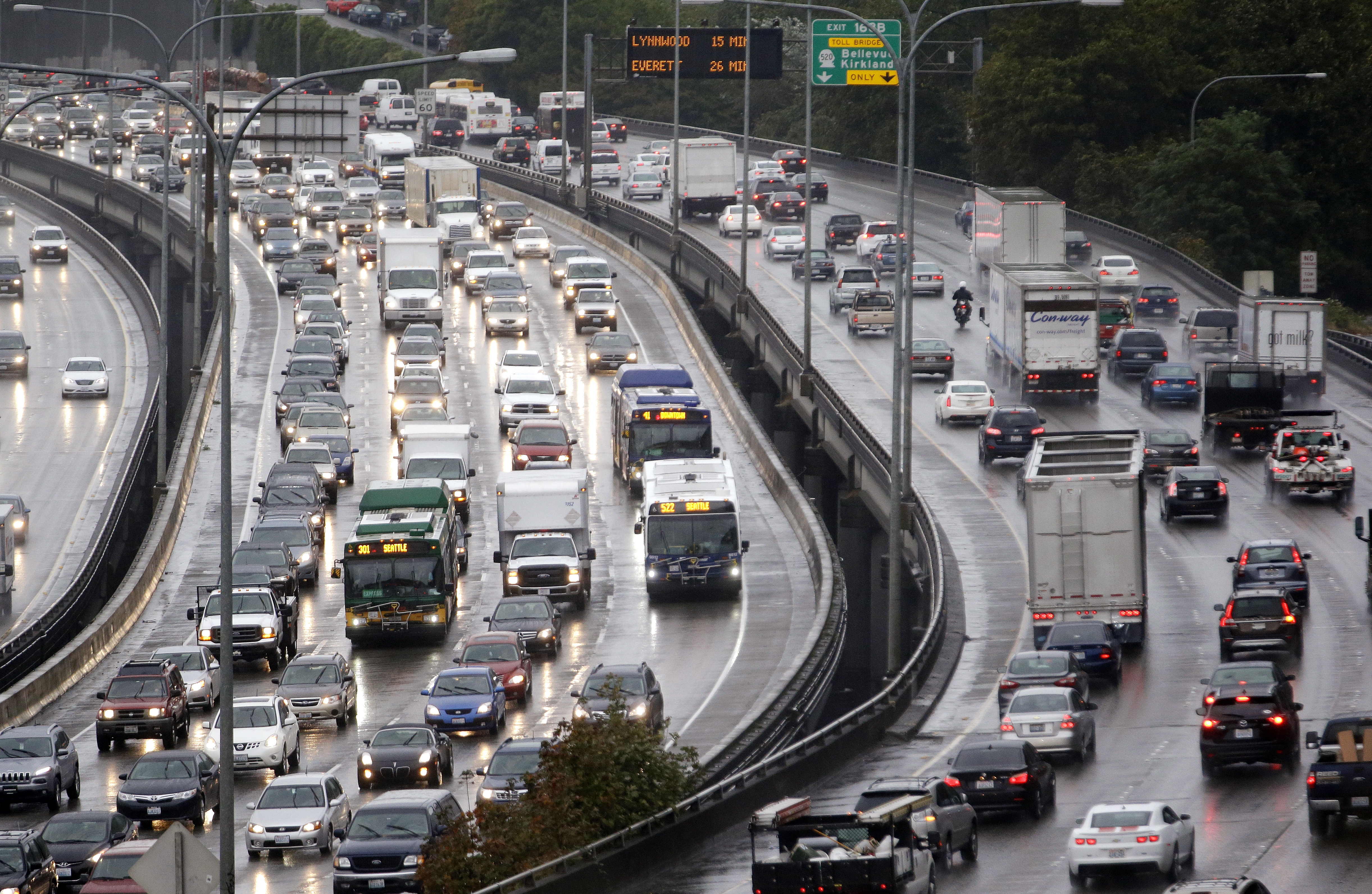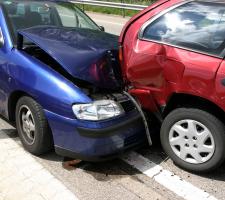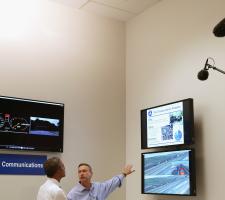
The progress of connected vehicle (CV) technologies takes centre stage among the hot topics highlighted in the September 2017 edition – the first since 2014 – of the ‘ITS Benefits, Costs and Lessons Learned’ survey from the
Covered in the report are some of America’s most recently assessed CV implications for safety, enhanced mobility and the environment. Central to this programme aimed at reducing road deaths and injuries, is the development of a key CV tool - the basic safety message or BSM.
This transmissible data packet contains core information on key factors such as a vehicle’s size, current position, heading and speed - that indicate its present state and predicted path.
Work on the BSM is being tailored to suit the low-latency, localised broadcasts needed for vehicle-to-vehicle (V2V) safety applications and one major benefit is its ability to transmit at the rate of ten times per second.
Spurring on the current efforts is USDoT’s
Once fully deployed, the refined version of this system is expected to prevent between 439,000 and 615,000 crashes per year, save between 987 and 1,366 lives, avoid between 305,000 and 418,000 major injuries, and eliminate between 537,000 and 746,000 cases of vehicle-only damage.
In addition to the DSRC technology, the refinement identified by NHTSA would involve the auto manufacturers agreeing to install two application seen as being important to maximise the safety benefits of elements of V2V deployment: intersection movement assist and left turn assist. The industry has indicated that both systems are already included in their research and deployment programmes.
Initial estimates of the costs per vehicle for supplying a package including a DSRC radio, antenna, GPS unit, hardware security module, the two apps and installation have come in at between US$249 and US$351. The JPO expects these to fall to less than US$200 by 2025.
In terms of overall benefits delivered, the JPO believes that its calculations may be understated, because manufacturers could take advantage of the opportunity of the ruling to incorporate further safety aids.
The main challenge it foresees is securing the funding for the roadside infrastructure necessary to support the implementation. It stresses the need for large-scale, public/private-sector collaboration in developing a system that will actively engage the automotive, telecommunications and consumer electronics industries in working to achieve an ‘integrated outcome’.
In the mobility arena, the recent JPO Intelligent Network Flow Optimisation (INFLO) initiative aims to optimise traffic flows and reduce levels of rear-end crashes during periods of congestion. A prototype has successfully demonstrated the feasibility of using frequently collected and fast disseminated data from both CVs and the road infrastructure.
A dynamic speed harmonisation component enables drivers to adapt the appropriate speed in response to congestion levels, incidents and poor weather or road conditions. Its queue warning component gives drivers timely warning when approaching a queue to enable them to brake safely, change lanes, or modify their behaviour to minimise the risk of collisions. It uses both vehicle-to-infrastructure (V2I) and V2V communications to enable affected vehicles to automatically broadcast their current status to other road users and the traffic management centre.
A 2015 demonstration in the Seattle area of Washington State showed the combined components have the potential to reduce the number of vehicles travelling at unsafe speeds by up to 20% - and without any sudden deceleration that could prove dangerous. A dashboard-mounted smartphone showed drivers the recommended speeds and the existence of, and distance to, any upcoming queues (or, if already in a queue, the estimated time to freeing up) as well as traffic-related weather information.
Capturing the data, storing it for processing and delivering the resulting BSMs proved to take less than ten seconds. As a result, drivers could expect to receive warnings at least one mile (1.6km) in advance of the back of a queue. The exercise also demonstrated the scope for detecting a queue three minutes earlier by using CV data than was achievable using only that which became available from the road infrastructure.
When quizzed afterwards, participants saw immediate practical benefits in the queue warnings although those for speed harmonisation were not as apparent.
Environment
In the environmental arena, the JPO’s Applications for the Environment: Real-Time Information Synthesis (AERIS) research programme has focused on the contributions that CV technologies can make to reducing fuel consumption and emissions. Its on-board Eco-Approach and Departure system uses wireless data communications from roadside equipment to calculate the optimal speed to enable a vehicle to arrive at the next intersection as the signal is green (often called speed-to-green).
AERIS’s brief did not initially extend to the development and testing of a prototype. However, this particular effort showed enough promise as a near-term solution, with the potential for delivering substantial environmental benefits, to justify a field trial at USDoT’s Turner-Fairbank Highway Research Center in Virginia.
So AERIS launched its GlidePath project, which incorporated a cooperative adaptive cruise control system designed to communicate with an upcoming traffic signal to automatically control a vehicle’s speed. As a test car approached the intersection, it received two distinct DSRC-based messages; one describing the signal phase and timing (which was made available to the driver in an illustrative form), and the other the intersection geometry.
The on-board system then calculated the vehicle’s optimal speed to pass the signal on a green light or to come to a halt with the least-possible impact on fuel economy. Its recommendation was displayed on a separate tablet and the driver had the option to send the instruction directly to the car’s cooperative adaptive cruise control system.
Results showed fuel savings of as much as 22% compared with unequipped vehicles, due mainly to circumventing the driver-induced delay in achieving (and maintaining) the optimal speed of approach.
In 2015, USDoT engaged the automakers’ Crash Avoidance Metrics Partnership consortium to develop a roadmap for the near-term deployment of this technology. Areas spotlighted for early attention include researching the scope for operation at multiple intersections and then real-world testing along a traffic corridor.
Another AERIS project, Eco-Signal Operations, is encouraging the optimisation of existing high-occupancy vehicle (HOV) and high-occupancy toll (HOT) lanes as ‘eco lanes’. These would take advantage of CV-derived real-time traffic and environmental data to modify their times of operation and vehicle admissibility rules, in response to levels of demand.
The new lanes would mainly target CV-equipped low-emission, high-occupancy and alternative fuel vehicles, which would be able to opt in. Research to date suggests that there would be synergistic benefits for non-equipped vehicles that were following equipped ones.
The JPO also sees CVs playing important roles in realising smart city deployments by reducing the numbers of traffic collisions, deaths and injuries while also enhancing the urban environment through lower congestion and emissions levels.
Other areas being investigated include using the shared data for the dynamic routing of trucks, package delivery by car share operators and ‘radically programmable’ city streets with dynamic markings which could change from thoroughfares to loading zones on demand. In addition, dynamically-routed on-demand minibuses could provide affordable first mile/last mile transportation options to underserved communities.











